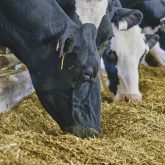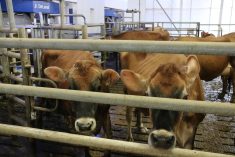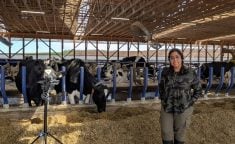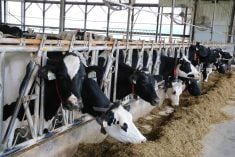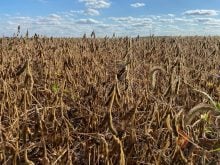Dutch dairy farmers were excited when the European Union removed milk quotas in 2015.
For years the Netherlands had been hitting its quota, so with quotas removed, it was thought dairy farmers would finally be able to expand, and they did.
However, the growth happened too fast, and that has led to new problems.
Why it matters: In areas of the world where quota systems for milk production have disappeared, other restrictions often crop up.
Dutch dairy farmer Cees Beekmans says government officials claimed production would only increase a few per cent, but he thought otherwise.

“(Dairy farmers) were pushing on the gas to produce more milk. If you feed a little bit harder you’ll get at least four or five kilo (more of milk) per cow per day. So in that way, you can see Holland produced more in a very short period of time,” Beekmans said through a translator during a visit to his farm near Oirschot by journalists attending the International Federation of Agricultural Journalists (IFAJ) annual congress.
Quota in another form
The milk quota was a 30-year-old European Union policy originally put in place to reduce overproduction. The program included individual and national production quotas.
After they were removed in 2015, there were a few months where Dutch farmers were free to increase their production and herds. However, the Dutch government soon started talking about putting new regulations into place.
Read Also

Dissolving eartags could make pig traceability easier
A dissolving eartag for market hogs, called Clean Trace could reduce processing challenges and enable more individual management of pigs.
At the start of 2018 a new policy came into effect in the Netherlands. Farmers had to buy “phosphate rights” for each dairy cow they owned. The phosphate rights were a way to rein in the growing industry and follow EU regulations.
There are high concentrations of phosphates in surface water in the Netherlands. According to the Dutch government, one of the reasons is dairy manure. As a member of the EU, the Netherlands has to stay within the European maximum for the level of phosphate emissions.
Each dairy farmer would be given a set amount of phosphate rights depending on their herd size as of 2015, minus four per cent. Farms that use grazing were exempt from the extra four per cent. Beef farms were also forced to reduce their herd sizes and follow the phosphate-rights program.
The new regulations meant some larger operations had to reduce their herds.
Beekmans had just expanded his operation in 2010, building a new barn that could hold 200 cows. When phosphate rights came into effect, he had to cull 20 cows.
Farmers can also purchase more phosphate rights from other dairy producers who are either looking to reduce their herd size or leave the industry. The phosphate rights cost about 5,000 euros (C$8,000) per cow.
Higher costs
Phosphate credits are reducing the Dutch dairy herd size, but increasing production costs may be contributing to a decline in the number of operations.
According to statistics provided by Dirk Roelants, a sales representative with Alltech, 800 to 1,000 farmers could leave the dairy industry in the Netherlands during the next year. There are currently about 18,000.
Beekmans says he would like to fill his barn but he doesn’t know if that is financially feasible.
At the DeBoer dairy farm near Dongen, Netherlands, the family is facing similar problems. Toon DeBoer built a new barn a few years ago too, with the plan to grow his operation so that his teenage son, Ron, could take it over in the future.

DeBoer still plans to expand his herd of 150 cows, and his barn can handle up to 200. He’s trying to finance part of the purchase of more phosphate rights himself and also through a loan from the bank.
“I think it’s possible (to expand and receive financing). But only if you are getting really good technical results and then show it to the bank,” DeBoer said through a translator.

Beekmans said he sees a dim future for the Dutch dairy industry. While he expanded and upgraded his milking system before the changes, others weren’t so lucky.
“There are still a lot of barns which are not ready for the future. So, these farmers have to invest a lot of money (to upgrade). But you also have to then invest in the quota for phosphate, which is requiring a lot of money and that will become too much and the banks will not allow that to happen. So, in that way a lot of these farmers will be stopped,” he said.
As Beekmans looks back on the removal of the milk quota, he doesn’t think the EU made the right decision.
“What we see now is that only the Netherlands in Europe has additional rules which is blocking our milk production… which means that this milk which could have been produced in Holland will now be produced in other countries in Europe. It would have been better when the quota stayed,” he said.
This article originally appeared on the Manitoba Co-operator.




